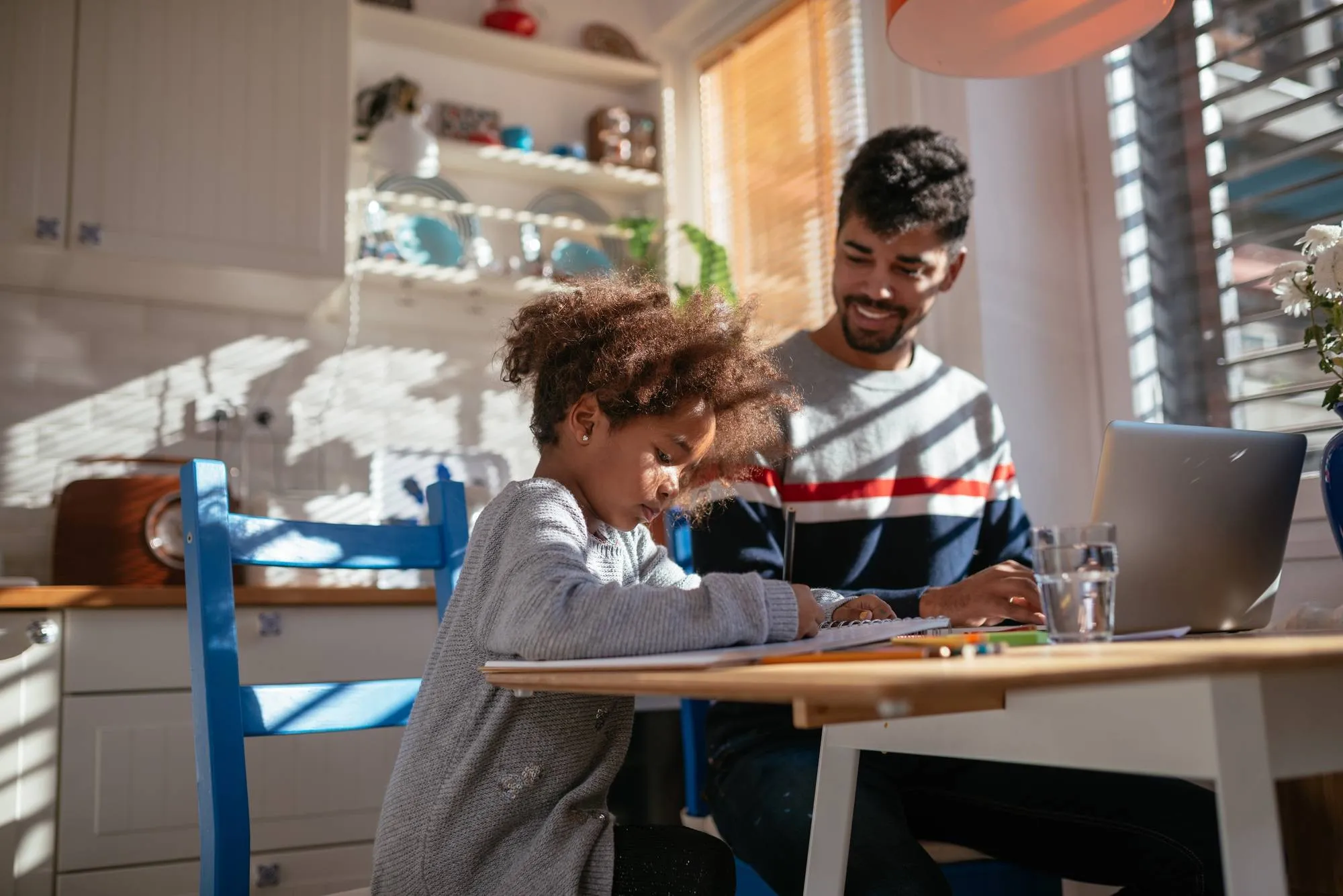Starting the supervised visitation process can feel overwhelming. Whether you’re the visiting parent or the custodial parent, knowing what to expect during that first visit can help ease anxiety and set the stage for a positive experience. At Supervised Visitation LLC, we’ve guided hundreds of families through their first visits, and we’re here to walk you through exactly what will happen.
Before Your First Visit
Initial Consultation and Paperwork
Before your first supervised visit takes place, you’ll complete an intake process that includes:
- Background Information Forms: Both parents provide contact information, emergency contacts, and relevant background details
- Court Order Review: We carefully review the court order to understand all requirements and restrictions
- Safety Assessment: We discuss any safety concerns or special circumstances
- Schedule Coordination: We work with both parents to establish a visitation schedule that works within the court’s parameters
- Fee Structure Discussion: Clear explanation of our rates and payment expectations
What to Bring
For the Visiting Parent:
- Valid photo ID
- Copy of the court order (if you have one)
- Age-appropriate activities or toys (subject to supervisor approval)
- Snacks or drinks (if allowed by the court order and facility rules)
For the Custodial Parent:
- Valid photo ID
- Any medications the child may need during the visit
- Comfort items for younger children (favorite toy, blanket, etc.)
- Emergency contact information
Setting Expectations with Your Child
If your child is old enough to understand, prepare them for the visit by:
- Explaining in simple, age-appropriate terms that they’ll be spending time with their parent
- Reassuring them that they’re safe and that a nice person will be there to help
- Avoiding negative comments about the other parent
- Keeping the explanation brief and positive
Arrival and Check-In Process
Staggered Arrival Times
To minimize conflict and ensure a smooth transition, we use staggered arrival times:
- Custodial Parent Arrival: The custodial parent and child typically arrive 10 minutes before the scheduled visit
- Brief Check-In: The custodial parent checks in with the supervisor, shares any relevant updates about the child’s day, and discusses any concerns
- Custodial Parent Departure: The custodial parent leaves before the visiting parent arrives
- Visiting Parent Arrival: The visiting parent arrives at the scheduled visit time
- Visit Begins: Once the supervisor confirms everyone is ready, the visit officially starts
The Facility
Our visitation rooms are designed to be welcoming and child-friendly:
- Comfortable seating areas
- Age-appropriate toys and activities
- Private, secure space
- Observation areas that allow monitoring while maintaining appropriate distance
During the Visit
The Supervisor’s Role
Your supervisor is there to:
- Ensure Safety: Monitor interactions to protect the child’s physical and emotional well-being
- Document Observations: Take notes on the visit as required by the court
- Enforce Court Order Terms: Ensure all restrictions or requirements in the court order are followed
- Facilitate Positive Interaction: Help create a comfortable environment for parent and child
- Intervene When Necessary: Step in only if safety concerns arise or court order violations occur
What You Can Do
Supervised visits work best when you focus on quality interaction with your child:
Recommended Activities:
- Reading books together
- Playing board games or card games
- Drawing or coloring
- Building with blocks or LEGO
- Talking about school, hobbies, or interests
- Playing with age-appropriate toys
- Watching a movie or show together (if facility allows)
Communication Tips:
- Stay present and engaged with your child
- Ask open-ended questions about their life
- Share appropriate stories about your own childhood
- Practice active listening
- Keep conversation positive and age-appropriate
What to Avoid
Certain behaviors or topics are typically restricted during supervised visits:
Prohibited Actions:
- Discussing court proceedings or legal matters
- Making negative comments about the other parent or their family
- Questioning the child about the other parent’s household
- Attempting to leave the supervised area
- Physical contact beyond what’s specified in the court order
- Using phones or recording devices (unless explicitly permitted)
- Providing unauthorized gifts or items
- Discussing inappropriate topics
Red Flags to Avoid:
- Making promises you can’t keep (“Soon you’ll come live with me”)
- Putting the child in the middle of adult conflicts
- Showing emotional distress or anger
- Trying to undermine the supervision process
Common First Visit Challenges
Child is Reluctant or Upset
It’s not uncommon for children to feel nervous, especially during the first visit:
- Give them time: Don’t force interaction; let the child warm up at their own pace
- Start small: Begin with a simple, low-pressure activity
- Stay calm: Your calm demeanor helps the child feel safe
- Let the supervisor help: They’re experienced in helping children adjust
You Feel Emotional
Seeing your child in a supervised setting can be emotionally difficult:
- Acknowledge your feelings: It’s normal to feel sad, frustrated, or anxious
- Focus on the present: Make the most of the time you have
- Remember the goal: This is a step toward rebuilding your relationship with your child
- Seek support: Consider talking to a therapist about your feelings outside of visits
Awkward Silence
If conversation doesn’t flow naturally:
- Bring engaging activities: Games and crafts can fill silence productively
- Ask about their interests: Children love talking about what they enjoy
- Share appropriate stories: Tell them about your day or funny childhood memories
- Play together: Sometimes playing alongside each other is enough
End of Visit
Saying Goodbye
The end of the visit can be challenging for both parents and children:
- Give a 5-10 minute warning: This helps the child prepare for the transition
- Keep goodbyes brief and positive: “I had such a great time with you today. I’ll see you next week!”
- Establish a goodbye ritual: A special handshake, hug, or phrase can make transitions easier
- Don’t prolong the departure: Long, emotional goodbyes can be harder on the child
After the Visit
For the Visiting Parent:
- The custodial parent will arrive after you’ve left
- The supervisor may briefly share how the visit went
- You’ll receive documentation of the visit if required by the court
For the Custodial Parent:
- You’ll arrive at the scheduled time
- The supervisor will reunite you with your child
- Brief updates about the visit may be shared, focusing on the child’s well-being
- Avoid immediately questioning your child about the visit; let them share on their own terms
What Happens Next
Supervisor’s Report
After the visit, the supervisor will:
- Document observations in a written report
- Note any concerns or positive interactions
- Submit reports to the court or attorneys as required
- Maintain confidential records
Subsequent Visits
After your first visit:
- Scheduling: Continue with your established visitation schedule
- Adjustment Period: The first few visits often get easier as everyone becomes more comfortable
- Consistency: Regular visits help build routine and comfort for the child
- Progress: Over time, the court may consider less restrictive supervision based on documented progress
Building Toward Your Goals
Supervised visitation is often a stepping stone:
- Demonstrate Commitment: Consistent attendance shows your dedication to your child
- Follow All Rules: Compliance with supervision requirements builds trust
- Positive Interactions: Quality time with your child is the ultimate goal
- Document Progress: Reports showing successful visits can support requests for increased or less restrictive visitation
Tips for Success
For Visiting Parents
- Arrive on time: Punctuality shows respect and commitment
- Follow all rules: Even if you disagree with certain restrictions, compliance is essential
- Stay child-focused: Make the visit about your child, not your feelings about the situation
- Be patient with yourself: Building or rebuilding a relationship takes time
- Plan ahead: Bring activities or have conversation topics in mind
- Respect boundaries: Physical and conversational boundaries are there for a reason
- Stay positive: Your attitude sets the tone for the visit
- Be flexible: Children’s moods and energy levels vary
For Custodial Parents
- Support the visit: Help your child feel comfortable about spending time with their other parent
- Be on time: Punctuality for drop-off and pick-up is crucial
- Avoid pumping for information: Let your child share about the visit naturally
- Keep communication professional: Interactions with the other parent should be cordial and minimal
- Trust the process: The supervisor is there to ensure your child’s safety
- Maintain consistency: Regular visits help children adjust
- Address concerns appropriately: If you have safety concerns, communicate them to the supervisor or your attorney
- Focus on your child’s needs: Set aside your own feelings to support your child’s relationship with their other parent
Common Questions
How long do first visits typically last?
First visits usually range from 1-2 hours, though this varies based on the court order, the child’s age, and individual circumstances. Shorter visits may be appropriate for very young children or when parents and children haven’t seen each other in a long time.
What if my child doesn’t want to participate in the visit?
This is a situation we handle carefully. We never force a child to interact, but we do encourage participation with age-appropriate techniques. The supervisor will document the child’s behavior and work with both parents to create the best possible environment. In cases of serious resistance, this information is included in reports to the court.
Can I bring gifts for my child?
This depends on your specific court order. Some orders allow gifts, while others restrict them. Always check with your supervisor before bringing gifts. If allowed, keep gifts modest and appropriate.
What if I need to cancel or reschedule?
Life happens, and occasionally visits need to be rescheduled. Contact us as soon as possible—preferably 24-48 hours in advance. Frequent cancellations or no-shows reflect poorly in supervisor reports, so make every effort to attend scheduled visits.
How much does supervised visitation cost?
Costs vary by location and service provider. At Supervised Visitation LLC, we strive to keep our services affordable while maintaining the highest standards of care. Contact us for specific pricing information.
Will the supervision level ever change?
Many courts use supervised visitation as a temporary arrangement. As you demonstrate consistent, appropriate interaction with your child, the court may consider reducing supervision requirements or transitioning to unsupervised visitation. This decision is ultimately up to the court based on supervisor reports and other evidence.
Moving Forward
Your first supervised visit is just the beginning of your journey. While supervised visitation may feel restrictive or uncomfortable at first, remember that it serves an important purpose: protecting your child while preserving and rebuilding your relationship with them.
Embrace the Opportunity
Every visit is a chance to:
- Show your child that you’re committed to being in their life
- Demonstrate positive parenting skills
- Build or rebuild trust
- Create positive memories
- Work toward less restrictive visitation arrangements
Stay Committed
The most successful outcomes in supervised visitation come from parents who:
- Attend every scheduled visit
- Follow all requirements without complaint
- Focus on their child’s needs
- Work cooperatively with supervisors
- Make continuous efforts to improve their parenting skills
- Remain patient through the process
Get Support
Navigating supervised visitation can be emotionally challenging. Consider:
- Working with a therapist who specializes in family law issues
- Joining support groups for parents in similar situations
- Taking parenting classes to strengthen your skills
- Maintaining open communication with your attorney
Contact Supervised Visitation LLC
If you have questions about your first visit or need to schedule supervised visitation services, we’re here to help. Our experienced team understands the complexities of family law situations and is committed to providing a safe, supportive environment for you and your child.
Remember: The first visit may feel awkward or difficult, but most families report that subsequent visits become more comfortable and natural. Give yourself grace, stay focused on your child, and trust the process.
Your relationship with your child is worth the effort, and we’re here to support you every step of the way.
Supervised Visitation LLC provides professional supervised visitation and monitored exchange services throughout [your service area]. Our trained supervisors create safe, neutral environments where parents and children can maintain meaningful relationships during family transitions. Contact us today to learn more about our services or to schedule your first visit.




